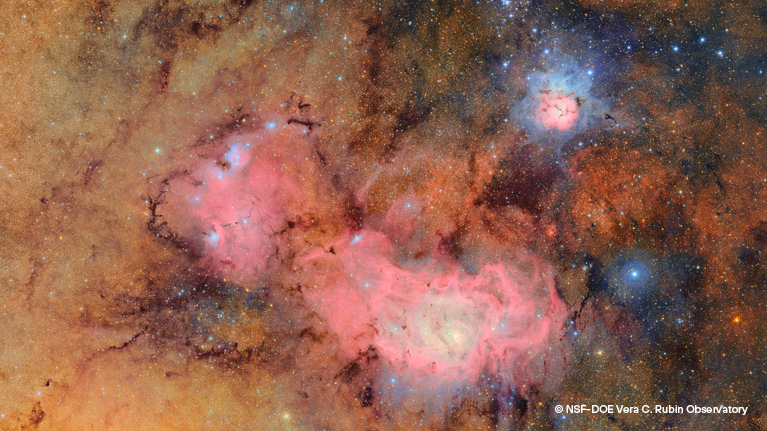The observatory that will revolutionize how the Universe is explored releases its first images
The Tekniker technology centre has been actively involved in commissioning of the Vera C. Rubin telescope, a facility that will offer a new vision on how the cosmos can be researched.

Thanks to the revolutionary Vera C. Rubin (NSF-DOE) observatory, the cosmos can now be explored in a unique and ground-breaking manner. Equipped with the biggest camera ever built to date, the telescope will scan the sky repeatedly for 10 years to produce an ultra-high definition film of the Universe featuring a very large field of vision. It will only require one year to detect more asteroids than all the other telescopes that are currently in operation.
Thanks to the data obtained, the scientific community will not only understand our Universe better but also document its evolution, explore mysteries associated with energy and dark matter and find answers to questions that we cannot even imagine now. It was on June 23 in the course of an international event when the first images supplied by the Vera C. Rubin observatory were released. A project in which the Basque Technology centre Tekniker, a member of the Basque Research and Technology Alliance (BRTA) has played an outstanding role.
Tekniker has been deeply involved throughout the entire initiative as regards designing, manufacturing, testing and commissioning the telescope’s mounting, mirror supports and the camera. More specifically, Tekniker has to be given credit for the telescope’s control systems equipped with an essential 400-tonne structure that will allow the 8.4 m diameter mirror (as wide as a tennis court) to position itself as quickly as possible, vibration-free, to scan the visible sky.
Improving telescope availability
The Tekniker team has provided support throughout the entire installation, adjustment and calibration process of the system to improve the telescope´s availability and allow the camera to obtain astronomical images.
This system includes a number of components such as the dome that provides protection against weather conditions and active mirrors that can move and adapt to different situations to obtain a clear image. Temperature controllers have also been installed to prevent the formation of hotspots and distorted images.
Alberto Izpizua explains that “all elements must run smoothly and in perfect harmony to avoid producing unfocused or blurry images on the camera”.
One of the tasks performed by Tekniker consisted in making all the necessary adjustments to ensure the correct operation of software and control algorithms specifically designed and developed to achieve a high degree of accuracy whenever the equipment moves. Thanks to this technology, the telescope cannot only rotate fully in only 36 seconds but also do so in more than 114 years.
The technology centre, moreover, has helped to improve the precision and operation of the system by allowing the digital camera to rotate. In order to do so, the researchers involved in the project did not only replace the trajectory generator with an ad-hoc unit designed internally, but also modified the motion controller.
Tekniker has also assisted in the development of the camera´s cable rotator, a mechatronic device required to prevent operational interferences. The solution gently winds or unwinds the ducting and cables connected to the camera whilst it rotates, i.e., when taking pictures of the visible sky.
Tekniker is currently using its own digital twin developed in-house to check software modifications prior to being implemented on the telescope to save time required for machine testing and to avoid major errors.
More about Vera C. Rubin
The Vera C. Rubin observatory is a joint collaborative programme of the NSF National Laboratory of Optical-Infrared Astronomy Research and the National Laboratory of the DOE’s SLAC to run the facility.
Since its inception and until fully materialised, the observatory’s team has consisted of thousands of professionals from over 30 countries featuring astronomers, physicists, engineers and experts from leading firms dealing with telescopes such as GHESA (Spain), Phase (Italy), SKF (Sweden) and Heidenhain (Germany).
